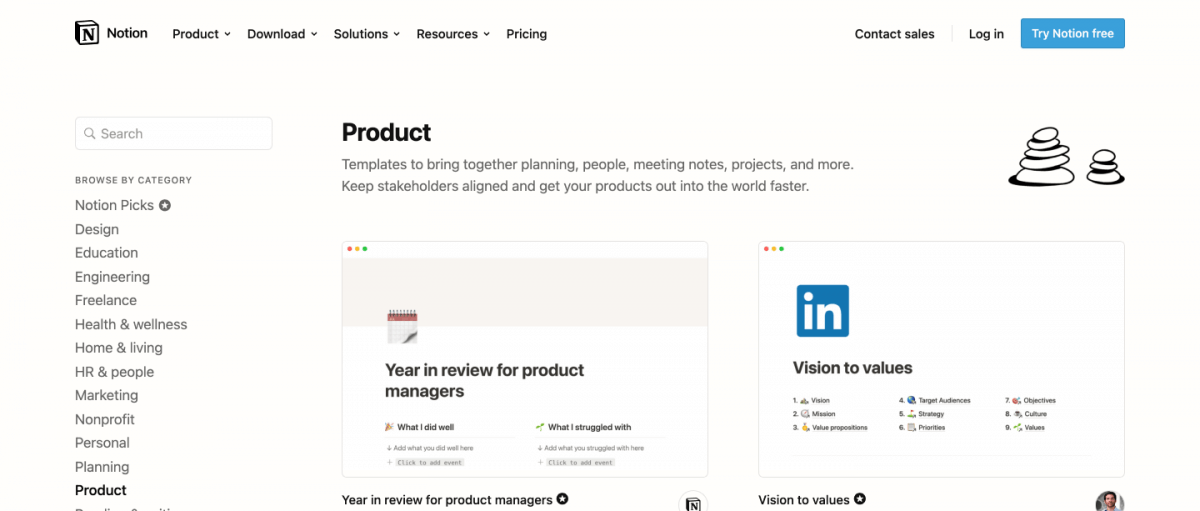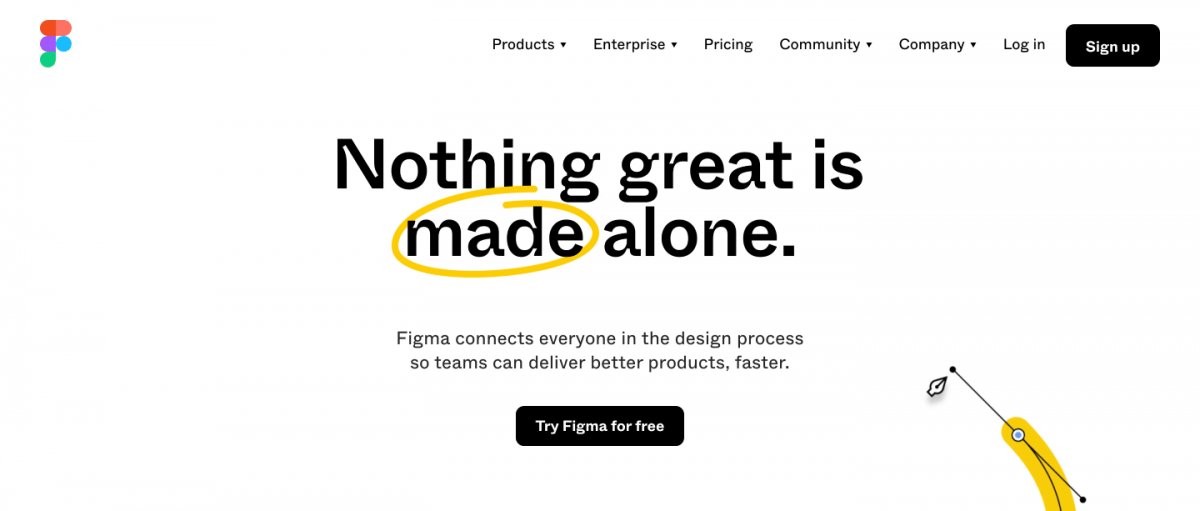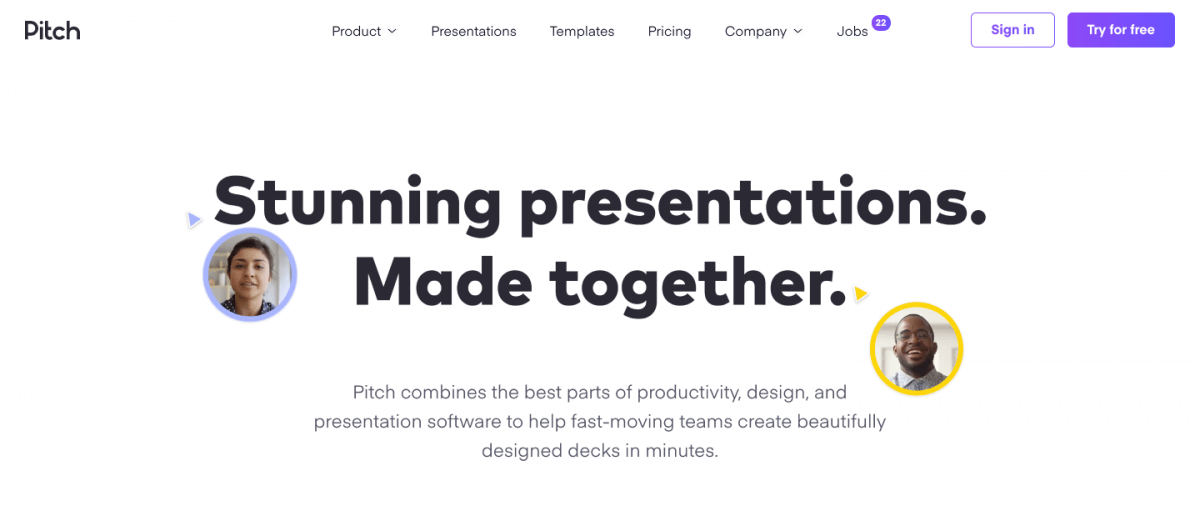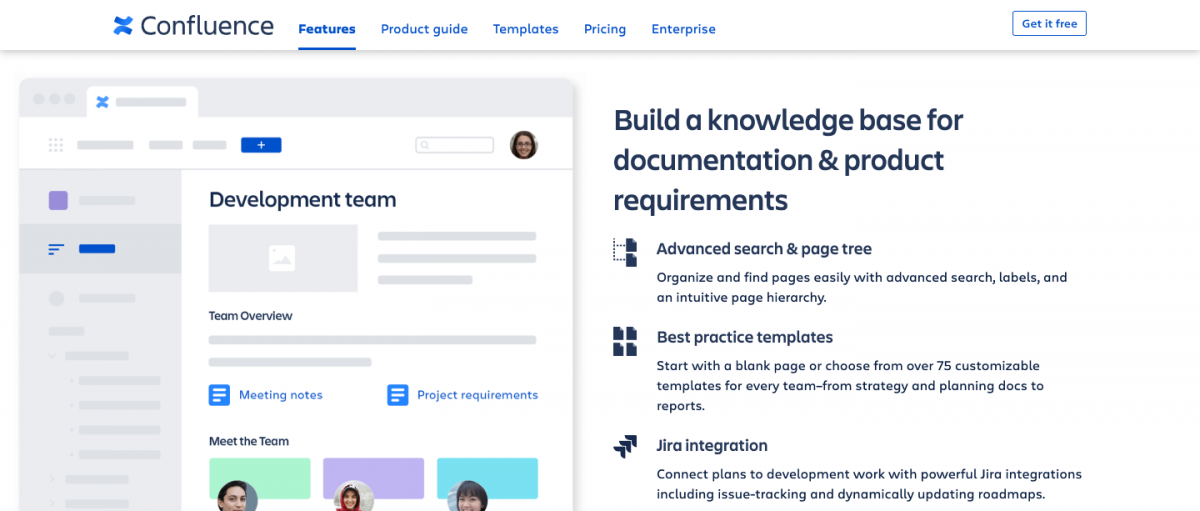13 Best Product Management Tools 2025 & When to Use Them
PUBLISHED
9 January, 2025

Content Director
Product managers (PMs) are ninjas of aligning people, management, and processes. No product tool or template can save you if you’re not killing it in these three areas.
That’s why we’ve listed the top 13 product management tools that the best PMs use to do their jobs better.
How do we define the best product managers? The best are the ones who dig into the problem space, validate ideas, are ruthless prioritizers, and know how to make sure everyone understands what they’re building and why.
The best PMs use product management software for:
Visibility of product planning and roadmapping across teams
Clarity in decisions that have been made based on profound user insights
Alignment in teams and strengthening communication
Best product management tools and software
The top 13 product management tools that the best product managers user are:
| Tool | Best For |
|---|---|
| Google Sheets | Organizing and analyzing data |
| Notion | Note-taking with modular building blocks |
| Miro | Brainstorming and collaboration for remote teams |
| Figma | Collaboration and prototyping |
| Pen and paper | Convenient note-taking and visual brainstorming |
| Pitch | Presenting product progress or results clearly |
| Confluence | Creating a product wiki and documenting roadmaps |
| Jira | Tracking issues and managing agile development |
| Google Docs | Collaborative document editing and sharing |
| Trello | Visual project management with boards and cards |
| UXCam | Analyzing user behavior in mobile apps |
| Survicate | Collecting user feedback and conducting surveys |
| Grammarly | Ensuring clear and error-free writing |
We’ve broken down this list into four stages of the feature life cycle that contributes to building the product value: opportunity identification & validation, design and prototyping, feature development, and launch & iteration.
Phase 1: Find and validate opportunities
In the identification and validation phase, you’ll be researching where customers are willing to pay to get their problems solved. This requires describing and digging into the problem space, competitor research, rifling through heaps of data, tons of user interviews, and analyzing the market.
1. Google Sheets
Good for: Organization and analysis Cost: Free for the average user, monthly plans start at $5 GetApp rating: 4.7/5 Number of collaborators: 100
Most blogs will tell you that spreadsheets are the worst, but the best product managers aren’t afraid to get their hands dirty with raw data sets. That’s why spreadsheets have a top position on our list. Yes, they are ugly, but powerful in processing numbers and producing insights that support product decisions. The best product managers will use Google Sheets at least at some point in their planning stage.
Gantt charts/roadmaps
Documenting and organizing user research interview results
Checklists and task management across teams
Spreadsheets do have their drawbacks. You can’t use them to present to stakeholders, and they’re a nightmare for collaboration. But we stand by Sheets because it requires no onboarding for the seasoned PM, no licenses, easy access, and it’s easy to use for the experienced product lead. This isn’t a list of tools for beginner PMs, but this is for the ones who know exactly what they need to do.
2. Notion
Good for: Note-taking, extremely modular building blocks Cost: Free to share with 5 guests, $4/month for unlimited guests, $8/month for unlimited team members, and premium features GetApp rating: 4.7/5 Number of collaborators: 5 to unlimited

Despite all its product-friendly features (listed below), it's Notion's note-taking capabilities that put this task management tool on the map. The best product managers use Notion to jot down notes in meetings, store them in one place, label them, and easily search for and find relevant information later. Finding meeting notes is necessary for PMs who take many types of notes from different stakeholders like leadership, business development, engineering, design, to 1:1s, team meetings, and most importantly, user interviews. With the note-taking tool, you can add properties such as:
Create drop-down menu items
Tag notes
Tag people
Add parent/child pages
Add formulas
Checklists
Set deadlines
Create templates out of existing note blocks
In a thinly veiled jab at Confluence, Notion advertises itself as 'a wiki that isn't clunky'. Logging into Notion, you'll see some similarities to Confluence with the left-hand panel that organizes topics into subcategories. With Notion, you can:
Create a product wiki for information like product analysis, feature docs, roadmaps
Document the product roadmap
Organize meeting notes
Plan sprints
Form Kanban boards
Create project plans
Notion is so versatile that PMs can even use it to plan their personal life — which no doubt can be impacted by a busy workday. Notion lets you switch between team and personal account easily.
Phase 2: Design and prototyping
Since product managers aren’t the ones designing wireframes, they’ll be biased towards tools that help them facilitate their role — software that makes gathering input and communications easy. The software we selected are known not just for their designer-first UX, but also for their ability to connect teams.
3. Miro
Good for: Brainstorming and collaboration for remote teams Cost: Free for 3 boards, $8/member and month for unlimited boards, $16/member and month for unlimited boards and premium features GetApp rating: 4.7/5 Number of collaborators: Unlimited from free to premium

PMs spend enormous amounts of time on strategic work, analyzing and figuring out what to do through tables, flowcharts, and mind maps. They are all used regularly on an individual and team basis.
If you know how to use a whiteboard for product management, virtual whiteboard Miro is a great visual collaborative tool. If you don’t know how to use a whiteboard for team brainstorming, you’ll need to learn that before getting started with Miro. The most experienced product leads know what visual frameworks are most suitable for the problem they’re trying to solve. Miro has popular templates for group work and scrum ceremonies, including:
Opportunity solution tree
Design sprints
Retrospective templates
Project canvas
Customer touchpoint map
Customer journey map
Likert scale
Concept mapping
Miro is one of the best tools for collaboration for remote teams. It was a project saver during a sudden remote work order in March 2020, and for that, Miro has a place in the hearts of many design and product teams.
4. Figma
Good for: Collaboration and prototyping Cost: Free for 3 files and unlimited collaborators, $12/editor and month for unlimited files and projects, $45/editor and month for premium features GetApp rating: 4.7/5 Number of collaborators: Unlimited for all plans

Like Miro, Figma took the product world by storm at the start of the pandemic as well. The straightforward product design tool that makes prototyping easy is best known for its comment feature, which lets teams provide feedback directly on the same version. Web files on Figma are easily shared with a single link. The ease of collaboration is no more complicated than a Google Doc.
However, the bread and butter of Figma is the ability to test and design low-high fidelity prototypes before the UX team actually starts designing the product. Their design system tools remove the need for version control of design files as they’re all in one place. Editors can lock and release commenting and editing to full control feedback. With Figma, you can:
Share and iterate
Get feedback from collaborators
Test interactions with users
Present designs to stakeholders
One of the cool features for product owners is the ability to embed live Figma files into tools like Notion, Jira, and Confluence. This means the most recent designs will show up live in the document. Another key advantage of Figma is its active community. Whether you need files, templates, plugins, or educational resources, you will have no problem finding what you need.
5. Pen and paper
Good for: Convenient for note-taking and visualizing brainstorming Cost: Free GetApp rating: N/A Number of collaborators: As many people fit on a sheet of paper
There have been studies arguing that handwriting and drawing stimulate the brain. It might sound old-fashioned, but sometimes you can’t beat pen and paper. After all, they are tools that will never crash unless someone throws your notebook in the trash.
Pen and paper can be useful for taking notes on the fly or jotting down your thoughts when you feel inspired. Furthermore, when collaborating with more visually-literate stakeholders, jotting down a diagram on a sheet of paper handy can help you convey your idea more clearly than a verbal explanation.
The best product managers must know when to invest how much time. Overinvesting time into ideation is a big problem of PMs, and pen and paper saves time — the most valuable startup resource.
For personal note-taking, and group brainstorming, our senior graphic designer at UXCam recommends the following stationery:
Muji gel ink ballpoint pen black in 0.5mm: for smooth smudge-free note-taking and a skip-free ink glide.
Midori MD notebook A5 grid paper: always lies flat whenever you open it.
Sharpie black fine point permanent marker: a smear-resistant Sharpie is a must-have for physical brainstorm sessions. The weight of the sharpie is bold enough to stand out on a post and makes it easier to read at a distance.
3M Post-it multi-colored sticky pack: cheap sticky notes tend to fall off or leave glue on the walls. 3Ms are a staple of any PM toolkit, and you must know the.
Moleskine grid books: the main advantage of these is that they look posh.
The downsides to pen and paper are obvious so let’s ignore those and let them have their moment on this list.
6. Pitch
Good for: Presenting product progress or results clearly Cost: Free for unlimited presentations and guests. $9(€8)/month for unlimited file size upload and premium features GetApp rating: N Number of collaborators: Unlimited for all plans

Presentations are an underrated secret weapon of the effective product manager. Managing up is one of the most critical PM skills because you need to get credibility and buy-in from leadership. How do you do that? By presenting your progress and outcomes clearly and concisely. When you’re able to convince major stakeholders that the work you’re doing is making an impact, it will help yourself, the product team, and the whole organization.
Presentation skills are a must-have for any product manager. There’s a common challenge among project managers to influencing without authority. Product managers seldom have direct reports, but they need to herd multiple teams with various objectives in the same direction. They have to constantly sway stakeholders in their favor with clear, visual communication. A good pitch deck template will help you communicate your message, but you’ll need to be a great storyteller first. You can use Pitch to share and distribute:
Product release notes
Product vision
Technical dependencies
Strategic decisions
Roadmaps
Pitch is perfect for product leads who want to create beautiful, branded slide decks without spending hours on them. This modern presentation software enables teams to create beautiful slides together in a fast, collaborative way, without the hassle of different operating systems, missing fonts, and old, off-brand templates.
A key bonus is that Pitch integrates natively with stock-image platforms like Unsplash and Giphy, as well as with data sources like Google Analytics and Google Sheets, making it easy for PMs to find the right visuals and relevant data to convey their ideas.
The limitations of Pitch depend on you. The best presentations are not just beautiful, but they are structured, concise, and fun. So Pitch can’t teach you that with a template, but you’ll have to have it pre-structured in your head or in a Google Doc first.
Phase 3: Feature development
Once you’re certain of what value you want to deliver and have developed and tested a solution, it’s time to bring it to life. During the development phase, PMs need to keep track of the features being built by developers. The key is to work with tools that allow them to mirror and support the agile development lifecycle of engineering and technology teams.
7. Confluence
Good for: Documentation and collaboration Cost: Check out their customizable price page GetApp rating: 4.4/5 Number of collaborators: 10-20,000
8. Jira
Good for: Accountability and clarity in task management, great integrations with code version control repository tools and project management tools. Cost: Free for up to 10 users. Standard, premium and enterprise pricing available GA rating: 4.4/5 Number of collaborators: 10-20,000

Confluence + Jira integration
SpongeBob and Patrick, peanut butter and jelly, Confluence and Jira. Confluence, the collaborative documentation wiki, and Jira, the issue- and task-tracking software, make one of the world’s greatest duos. The short answer is that, together, they make it easier for engineers to complete their work. Their tasks — and everything they need to know to complete them — are in one place.
Engineering primarily owns product development and are often the users of Jira, while PMs support them in their development work through breaking down the work, sequencing it, and helping with solution discovery. Jira can be used as an agile project management tool to align on the daily progress and remove roadblocks.
How you use both tools depends on your framework, but Confluence and Jira complement each other primarily in two ways:
With Jira, each card on a Kanban board represents a single work item as it moves through various stages of completion. By providing info like relevant software documentation in Jira cards (linked to Confluence), engineers can complete their tasks more effectively. For app developers, it means that besides the task, they’ll be able to see the project information like requirement documents, roadmaps, and process documentation in one place.
Confluence is a great tool to store empowering documentation for developers and to use it in their ideation, finding solutions, and prioritizing. Everything a team needs to complete a project is stored in Confluence, which comes with templates such as:
Product requirements document (PRD)
Product roadmap
Process documentation
Meeting notes
Release notes
Quickstart guides
With a Jira integration, collaborators on Confluence can immediately turn feedback sessions and issues into Jira tasks as they arise. Users can quickly highlight a text and turn it into an actionable item.
9. Google Docs
Good for: Easy access to early-stage documentation and collaboration Cost: Free for the average user, monthly plans start at $5 GetApp rating: 4.7/5 Number of collaborators: 100
Google Docs or Confluence? While the primary use case for Confluence is on collaboration around development, Google Docs is best for drafting documents. Pros know that discussions with stakeholders start in Docs before migrating to more collaborative tools.
Docs has released many @ tag ‘smart chips’ to link information from other Workspace apps (drive, calendar, video) to a Docs file.
Tagging people in documents for comments with @ [team member]
Tagging meetings to create instant meeting notes. Tag @ [your calendar meeting]
Instant checklists with @ [checklists]
It’s also great for text-heavy documents that require many iteration stages like product requirements document (PRD) and specs that include fine-grained information about the product. Check out this PRD template.
Google Docs is simple, straightforward and intuitive. If you’re a PM, it’s generally the easiest way to create documents that you and other teams can edit in real-time, with no conflicting versions, and easy to access when needed.
10. Trello
Good for: A high-level project view for individual and team use Cost: Free for 10 boards, $5/month for unlimited boards, $10/month for unlimited boards and premium features GetApp rating: 4.5/5 Number of collaborators: Unlimited for all plans

One glance at a colorful Trello board tells you what has been done so far, what’s in process, and what still needs to be done. A Trello board is like a whiteboard, filled with bright sticky notes, with each one representing a task for you and your team.
Individual use
Product managers appreciate how Trello helps them keep track of their own internal thoughts and processes: They have to focus on their own high-impact strategic work amid everyday firefighting. An average PM is like a human inbox that receives impetus from everywhere, keeping track of it is a colossal challenge. So collaboration is a huge part of their job, but a big part of a PM’s job is private and Trello can help them organize what’s going on in their head.
Team use
Product managers love Trello for its accountability tracking and the ability to keep conversations, links, documents all in one place, so you’re running between apps to get things done. It’s like Jira but significantly less complicated.
Trello has tons of community-built templates for engineering and product development built by real people and companies. You can check them out here and adapt them to your product:
Best of all, the free version is fairly comprehensive, so there is no reason not to give Trello a try if you aren’t using it already.
Phase 4: Launch and continuous iteration
At this point in feature development, a PM will go through a launch checklist:
Structure: A PM will ask themselves whether the launch is structured correctly to gather insights around product value, usability and gradual performance. They will ask, “Have we managed to create and deliver value for the user and the business, and is anything stopping this feature from achieving its full potential?” If any risks are slipping through the cracks, you need to structure your launch properly to address them.
Collaboration: Are all the pieces in place to collaborate effectively across the organization? Are all stakeholders such as marketing, sales, customer service, and the legal team prepared for launch?
Monitoring: To understand performance, are all dashboards set up to monitor impact and systems set up to gather quality feedback quickly?
Iteration: “Do we make an iteration decision or leave it as is and move forward?” This is the time to optimize, redesign, or kill the feature altogether. Iteration is where all the leadership and stakeholders alignment happens.
11. UXCam
Good for:� Instantly seeing real user behavior Cost: Free for 5,000 monthly sessions, Premium for 250,000 monthly sessions (prices on request) GetApp rating: 4.6/5 Number of collaborators: Depends on subscription

The most important task of a product manager is to understand their users to build better products. Once a product is out in the wild and used by actual users, product teams are constantly trying to improve the customer experience. UXCam is an app experience analytics tool that helps product managers:
Empathize with users: Through funnel analytics, PMs can see exactly where customers are dropping off. With and, they’ll be able to filter and pinpoint what happened to make users abandon the conversion.
Uncover user frustrations: PMs can see where users have repeatedly tapped on a specific part of the app with the rage taps metric. This could be a poorly placed [x] in a pop-up or a checkout button that’s not completely showing up on a smaller-than-anticipated phone screen.
Inform feature prioritization: By knowing what percentage of your customers are suffering and what part of the screen impacts them most, UXCam makes it easier to prioritize issues.
Experienced product managers usually have a gut feeling about certain product decisions, but a hunch will not fly when explaining what customers are experiencing. App analytics will tell PMs how users are interacting with their app. These analytics give indicators of improving user experience, prioritizing feature development, tracking conversions, and complementing quantitative user data. Some examples of things you can find out about your users include:
Understanding why they’re not converting on a checkout page
Pinpointing the reasons why they abandon the app at registration or login
Knowing where the best place is to add a pop-up or none at all
Understanding whether your screen flow is leading to conversions or confusing customers
Knowing what percent of users are experiencing bugs, freezes, or issues, and knowing which devices, screens, and users they’re affecting
Building awesome products and features is hard work, but with the right toolkit, it is possible. Luckily, these days there are some great tools out there for every type of product management task, from roadmapping to analytics. There are simply too many to list them all, but nonetheless, we hope you found this list useful!
Want to test out UXCam for free? Sign up for a free trial today with 100,000 monthly sessions and unlimited features.
12. Survicate
Good for: Gathering and analyzing customer data from your app, product or website Cost: Free trial/pricing starts from $119 per month GetApp rating: 4.5/5 Number of collaborators: 3 to unlimited
Survicate is an effortless survey software designed to support product managers in collecting comprehensive customer feedback across various channels. This continuous stream of customer insights assists in validating product decisions, automating feedback collection to track improvements, and acting on feedback to boost customer satisfaction and loyalty.
Key features for product managers:
Quick customization and deployment of surveys for immediate feedback collection.
Capability to run surveys via email, on websites, in-product, or in mobile apps, ensuring feedback is gathered from all customer touchpoints.
Easy integration with over 60 most popular tools, enabling a seamless flow of customer insights into existing workflows.
Advanced AI analysis that categorizes feedback into actionable topics, simplifying decision-making processes.
Capturing partial responses to improve engagement rates and the relevance of insights.
13. Grammarly
Good for: More accurate spellcheck than Microsoft Word or Google Docs Cost: Free for basic spelling, grammar, and punctuation. Premium starts from $12/month. Business depends on team size GetApp rating: 4.7/5 Number of collaborators: N/A
Imagine shooting off a newsletter to 10,000 customers for a beta launch. Suddenly you realize you’ve written “This is our beta plaunch”.
Grammarly is a writing assistant designed to help you communicate in clear English. It provides suggestions on the correctness and style of your writing, which goes way beyond grammar and spelling. Product managers have a lot of stakeholders, as they interface with many different teams. Especially in times of remote working, this usually involves a lot of written communication via email, Slack, and other channels.
Communication matters, but who has time to proofread every email three times? That’s why every product manager needs Grammarly in their toolkit. But double-check for yourself; Grammarly can make mistakes once in a while.
To learn more about product manager tools, check out:
Top 11 mobile app analytics tools
Best UX tools: 11 tools to make your life easy
Best iOS crash reporting tools
Best product management resources
Best product management courses: Top 8 platform
Funnel analysis guide for product managers
How mobile is evolving the role of product management
Special thanks to UXCam’s director of product, Alexandra Denisova.
AUTHOR

Jane Leung
Content Director
Jane is the director of content at UXCam. She's been helping businesses drive value to their customers through content for the past 10 years. The former content manager, copywriter, and journalist specializes in researching content that helps customers better understand their painpoints and solutions.
What’s UXCam?
Related articles
Session Replay
Mobile Session Recording - The Complete Guide 2025
Why session replay is such a valuable feature, and what you should look out for when starting...

Annemarie Bufe
Content Manager
Product Management
14 Best Product Development Software for Every Team 2025
Discover the 14 best product development software tools to streamline collaboration, track progress, collect feedback, and build better products...

Tope Longe
Growth Marketing Manager
Product Management
13 Best Product Management Tools 2025 & When to Use Them
Find out the top tools that the best product managers use daily to perform better at...

Jane Leung
Content Director
